Chinese condiments are integral to the country's diverse culinary landscape, enriching dishes with nuanced flavors and aromas. From the fiery kick of chili sauces to the umami depth of soy-based blends, these condiments showcase a rich tapestry of ingredients and techniques. Garlic, ginger, and various spices infuse sauces like hoisin and oyster sauce, while fermented pastes like doubanjiang offer complex, savory notes. Whether enhancing stir-fries, dipping dumplings, or marinating meats, Chinese condiments elevate every dish, reflecting centuries of culinary tradition and regional diversity. They are essential elements that add depth, balance, and character to the vibrant tapestry of Chinese cuisine.
Soy Sauce
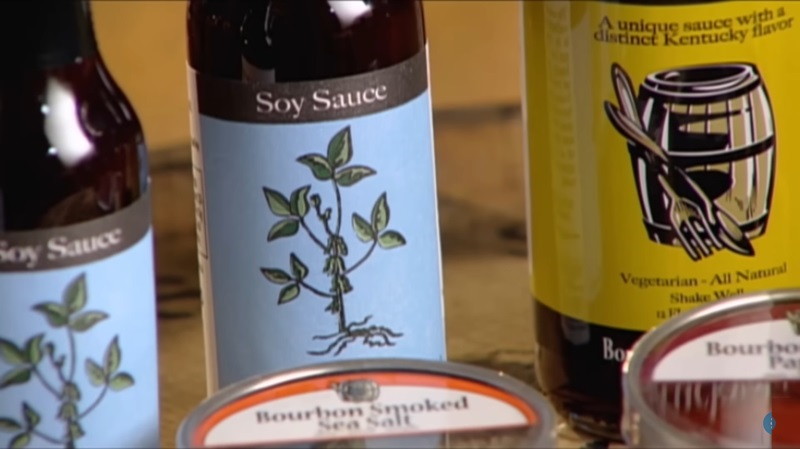
Soy sauce, a staple condiment in Chinese cuisine, is a savory and umami-rich sauce made from fermented soybeans, wheat, and salt. It is a fundamental ingredient that adds depth and complexity to countless dishes. With its distinct dark brown color and glossy texture, soy sauce is a versatile condiment used for marinating, stir-frying, dipping, and seasoning. Chinese soy sauce can be categorized into two types: light and dark. Light soy sauce, known as "sheng chou" in Mandarin, is thinner and saltier, commonly used for seasoning and enhancing flavors. Dark soy sauce, or "lao chou," is thicker, sweeter, and has a more robust flavor. It is often used for adding color and richness to dishes. The complex flavors of soy sauce are derived from the fermentation process. Traditionally, soybeans are cooked, mixed with roasted wheat, and then fermented for several months to develop their unique taste. The resulting sauce is rich, savory, and slightly tangy. Its distinct umami flavor enhances the taste of vegetables, meats, noodles, and rice. Soy sauce is an essential component in iconic Chinese dishes such as fried rice, dumplings, stir-fries, and noodle dishes.
Hoisin Sauce
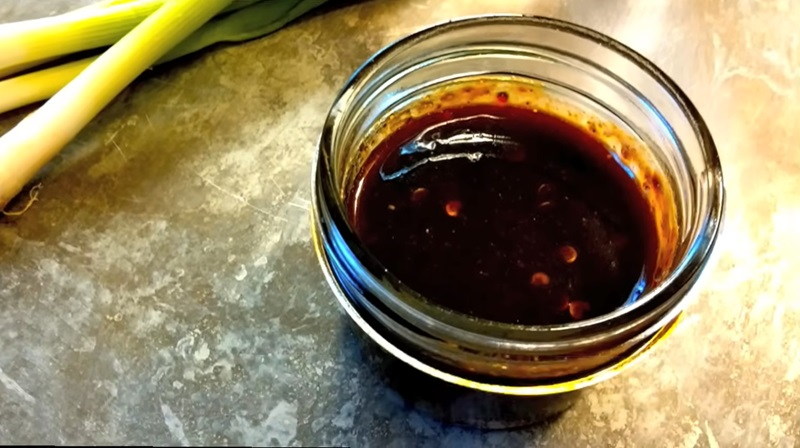
Hoisin sauce is a popular Chinese condiment that adds a rich and tangy flavor to various dishes. Made from a blend of fermented soybeans, garlic, vinegar, sugar, and various spices, this thick and dark sauce is known for its complexity and versatility. In Chinese cuisine, hoisin sauce is commonly used as a dipping sauce for spring rolls, dumplings, and roasted meats. It can also be used as a glaze for grilled or roasted dishes, adding a sweet and savory element to the flavors. The distinct taste of hoisin sauce is a combination of sweetness from the sugar, a deep umami flavor from the fermented soybeans, and a slight tanginess from the vinegar. This unique flavor profile pairs well with many ingredients, making it a popular choice in stir-fries, noodle dishes, and even as a condiment for sandwiches and wraps.
Oyster Sauce
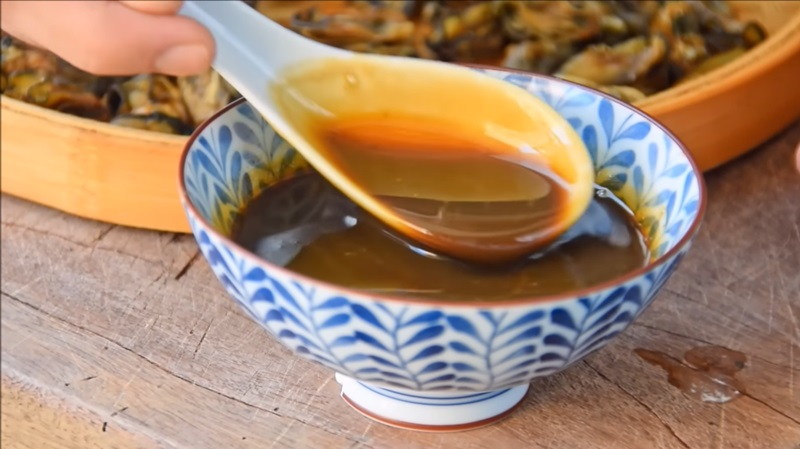
Oyster sauce is a fundamental ingredient in Chinese cooking. It is a flavorful condiment crafted from oyster extracts, soy sauce, sugar, and various seasonings. Known for its rich umami taste, blending sweetness and saltiness, this sauce has a thick and shiny consistency. It elevates the flavor of stir-fries, marinades, and dipping sauces, providing depth and complexity. While traditionally made with oyster essence, contemporary variations may use alternative seafood or vegetarian options to cater to diverse preferences.
Fish Sauce
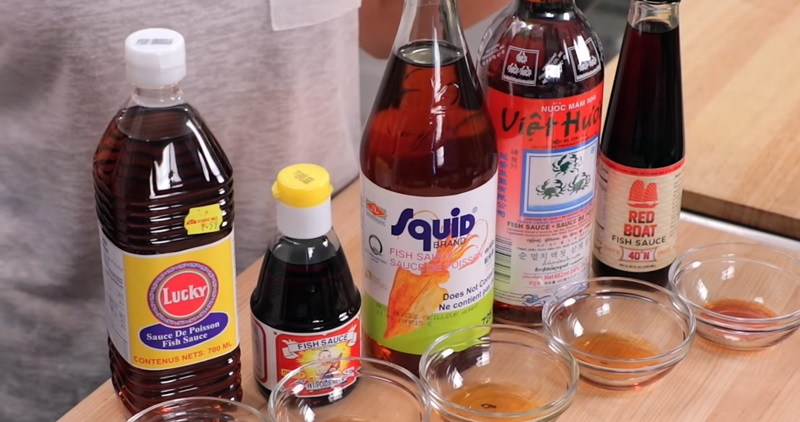
Fish sauce is a traditional Chinese condiment that adds a unique and savory flavor to various dishes. It is made by fermenting fish with salt for an extended period, resulting in a pungent and aromatic liquid. This condiment has a rich history in Chinese cuisine and is highly valued for its umami taste. Chinese fish sauce is typically made from small fish such as anchovies or mackerel. The fish are layered with salt in large barrels and left to ferment for several months or even years. During the fermentation process, enzymes break down the fish proteins into amino acids, giving the sauce its distinct flavor. This condiment is commonly used in stir-fries, soups, marinades, and dipping sauces. It adds depth and complexity to dishes, enhancing the overall taste.
Mala
-1710202541.jpg)
Mala is a pungent and numbing seasoning made from Sichuan peppercorns and chili peppers. Typically, it's transformed into a sauce by infusing it with oil and an array of spices. This sauce encompasses dried chili peppers, chili powder, douban paste, and a blend of aromatic spices like clove, garlic, star anise, and ginger. Slowly simmered with beef tallow and vegetable oil, the mixture intensifies over hours before being preserved in jars. Additional herbs and spices, such as sand ginger and poppy seeds, may be incorporated to enhance its distinctive flavor profile, resulting in a uniquely aromatic and fiery condiment.
Sweet and Sour Sauce
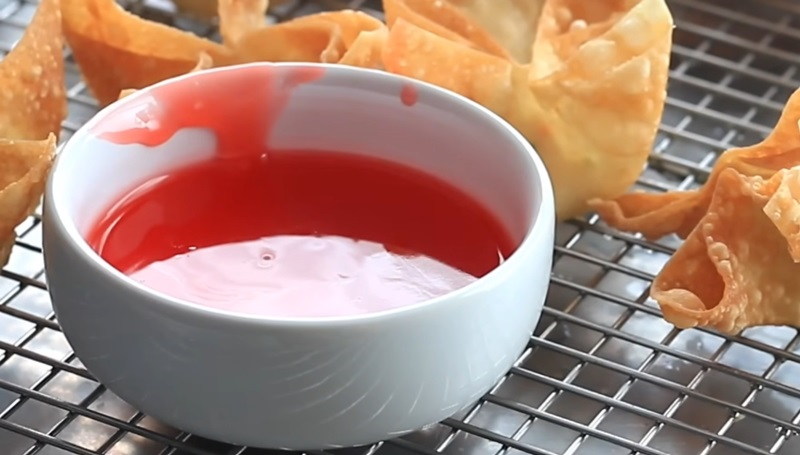
Sweet and sour sauce is a quintessential element of Chinese cuisine, renowned for its delightful balance of flavors. This sauce typically combines sweetness from sugar or honey with tanginess from vinegar, creating a harmonious contrast. Additional ingredients such as soy sauce, ginger, garlic, and sometimes fruit juices or ketchup are often included to enhance complexity. The sauce is usually thickened with cornstarch, resulting in a glossy texture. It pairs perfectly with a variety of dishes, from crispy fried meats and vegetables to stir-fried noodles and rice.
XO Sauce
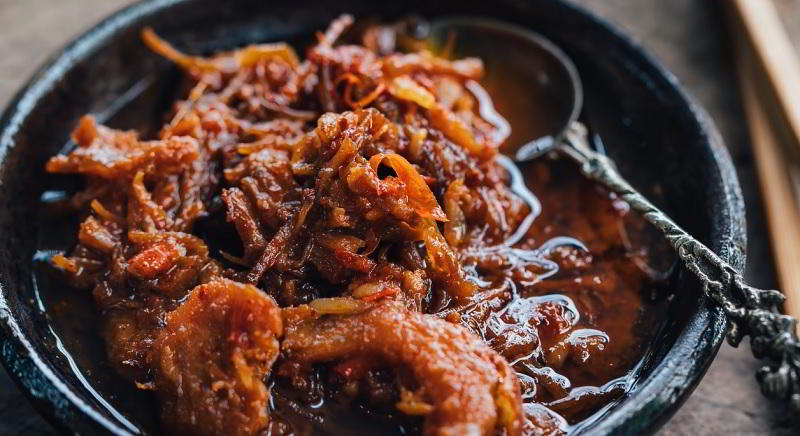
XO sauce is a popular and versatile condiment in Chinese cuisine. It is a savory and spicy sauce that combines various ingredients to create a rich umami flavor. The name "XO" is believed to have been derived from the term "extra old" used in the world of cognac, symbolizing the high quality and complexity of the sauce. The base of XO sauce typically includes dried seafood such as dried scallops, dried shrimp, and dried fish, which are finely chopped or minced. These seafood ingredients are then combined with garlic, shallots, and chili peppers for added heat and aroma. Some variations may also include cured ham or Chinese sausage for a smoky note. The mixture is then stir-fried until fragrant and the flavors are well incorporated. XO sauce is incredibly versatile and can be used in a variety of dishes. It can be added to stir-fries, noodles, rice, or even used as a dipping sauce. Its intense umami flavor adds depth and complexity to any dish it is paired with.
Doubanjiang
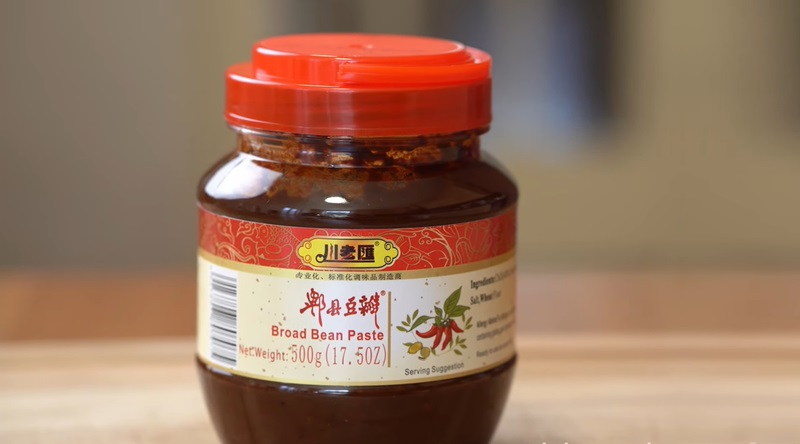
Doubanjiang, also known as spicy bean paste, is a popular Chinese condiment that adds a bold and spicy flavor to various dishes. Made from fermented broad beans, chili peppers, and other seasonings, Doubanjiang is characterized by its rich umami taste and distinctive aroma. This versatile condiment is widely used in Sichuan cuisine, particularly in dishes like mapo tofu and kung pao chicken. It can also be used as a stir-fry sauce, marinade, or dipping sauce for dumplings and spring rolls. The heat level of doubanjiang can vary depending on the brand and type, ranging from mild to extra spicy. The deep red color and thick texture of doubanjiang are a result of the fermentation process, which enhances the complexity of its flavors. It has a complex and savory taste with a hint of sweetness and a lingering spiciness.
Duck Sauce

Duck sauce is a well-loved condiment in Chinese cuisine known for its delightful taste. It is a harmonious blend of sweet and tangy flavors that complements dishes like Peking duck and crispy duck. This sauce is crafted using a mixture of ingredients including apricot preserves, honey, soy sauce, vinegar, ginger, and garlic. Through simmering, these components meld together to form a luscious and flavorful sauce. The sweet and fruity nuances of apricot preserves and honey are counterbalanced by the savory umami profiles of soy sauce and vinegar. Additionally, the ginger and garlic infuse a subtle spiciness and complexity to the sauce, making it an ideal accompaniment for the succulent and rich duck meat.
Fermented Bean Curd
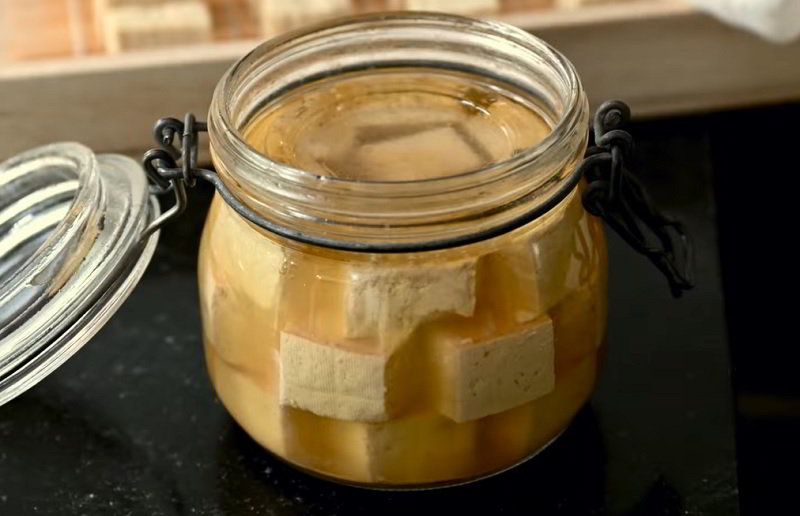
Fermented bean curd, also known as doufu ru or stinky tofu, is a popular Chinese condiment that adds a unique and bold flavor to dishes. This condiment is made by fermenting tofu in a mixture of brine and spices for several months, resulting in a pungent and distinct aroma. The color of fermented bean curd can vary, ranging from white to red, with red being more common due to the addition of red yeast rice during the fermentation process. Its texture is soft and creamy, making it easy to spread on various foods. When used as a condiment, fermented bean curd imparts a savory and slightly tangy taste to dishes. It is often used in stir-fries, soups, and braised dishes to enhance the overall flavor profile. The unique flavor of fermented bean curd can be quite addictive, with a combination of salty, umami, and slightly fermented notes.
Chili Oil
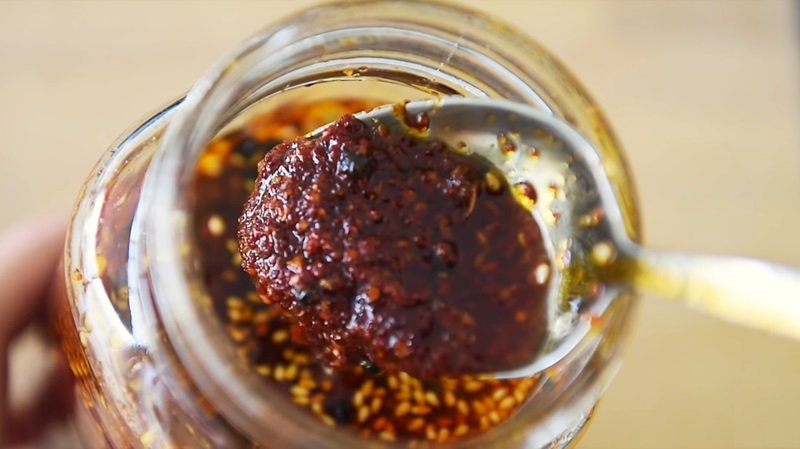
Chili oil is a popular condiment known for its fiery flavor and versatility. Made from a combination of dried chili peppers, Sichuan peppercorns, garlic, ginger, and various spices, this oil is a staple in Chinese cuisine. The process involves infusing the oil with the spices, giving it a rich and aromatic taste. This condiment adds a kick to any dish, from noodles to stir-fries and dumplings. The heat from the chili peppers is balanced by the numbing effect of the Sichuan peppercorns, creating a unique and addictive flavor profile. The garlic and ginger add depth and pungency, while the spices contribute a complex and lingering taste.
Rice Vinegar

Rice vinegar is a popular condiment in Chinese cuisine known for its mild flavor and subtle sweetness. It is made by fermenting rice wine or rice into vinegar, resulting in a light, clear liquid. This condiment is an essential ingredient in many Chinese dishes, adding a tangy and slightly acidic taste. Chinese rice vinegar comes in different varieties, including black rice vinegar, red rice vinegar, and white rice vinegar. Black rice vinegar, also known as Chinkiang vinegar, has a rich, smoky flavor and is commonly used in braised dishes and dipping sauces. Red rice vinegar, on the other hand, has a milder taste and is often used in pickling or marinating ingredients. White rice vinegar is the most commonly used type and is perfect for making dressings, sauces, and stir-fries.
Peanut Sauce
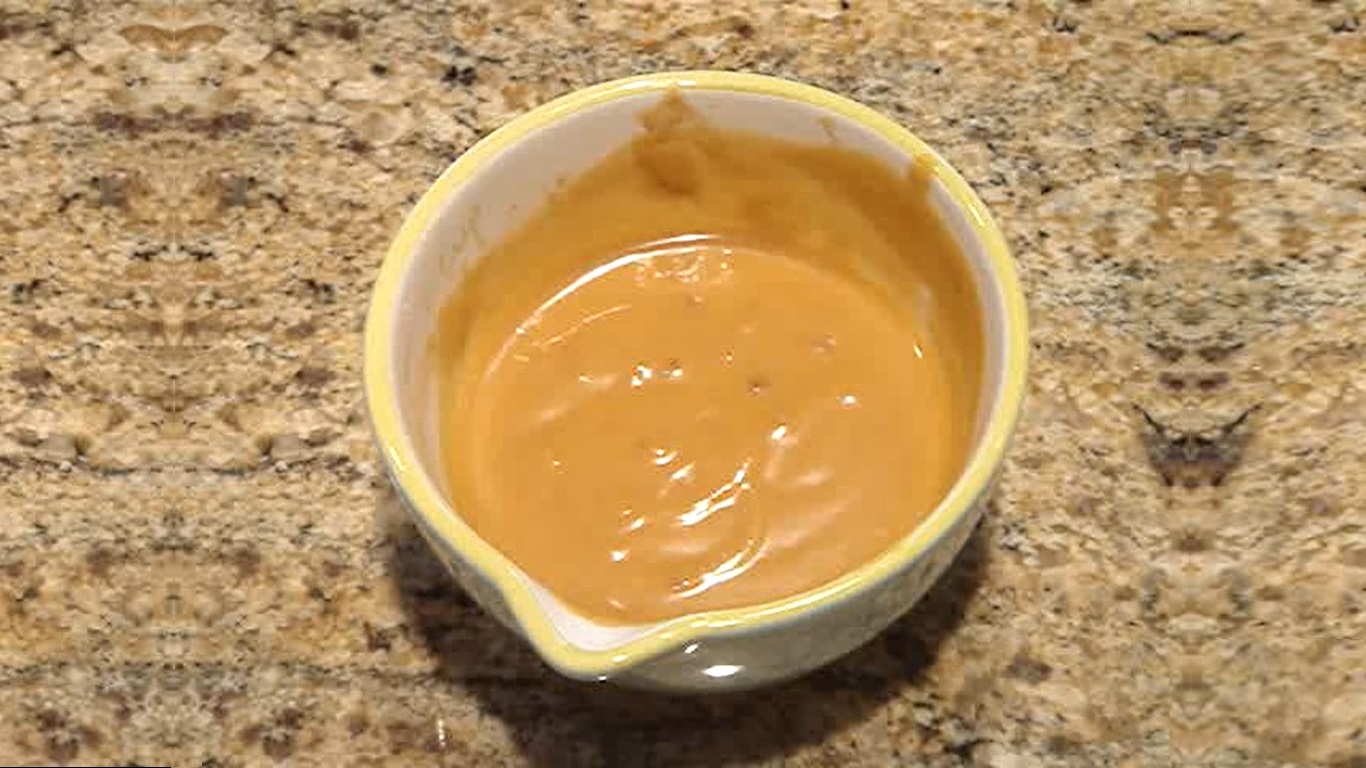
Peanut sauce is a popular condiment in Chinese cuisine that adds a burst of flavor to various dishes. Made from ground peanuts, this thick and creamy sauce has a rich and nutty taste with a hint of sweetness. It is commonly used as a dipping sauce for a variety of appetizers, such as spring rolls, dumplings, and satay skewers. The process of making peanut sauce involves grinding roasted peanuts into a fine paste and combining it with other ingredients such as soy sauce, garlic, ginger, sesame oil, and vinegar. Some variations may include additional spices or chili for a touch of heat. The sauce is then typically heated and simmered to allow the flavors to meld together. Peanut sauce is not only versatile but also provides a balance of flavors. The nuttiness of the peanuts complements the umami of soy sauce and the tanginess of vinegar, creating a harmonious blend.
Black Vinegar
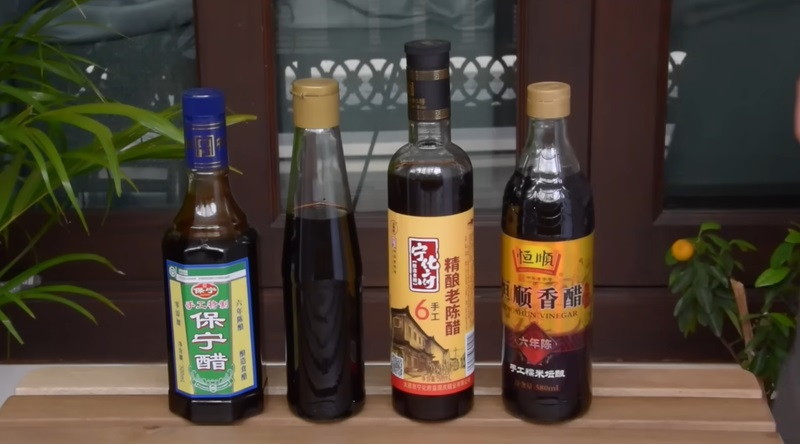
Black vinegar is a dark, aromatic vinegar made from fermented rice, wheat, barley, and sorghum. The vinegar is aged in clay pots, which imparts a unique flavor profile to the final product. Black vinegar is known for its rich, deep, and slightly sweet flavor. It has a complex taste that is both tangy and smoky, with hints of caramel and malt. The vinegar is often used as a dipping sauce or marinade for various dishes, particularly in northern Chinese cuisine. In Chinese cooking, black vinegar is commonly used in dishes like dumplings, noodles, stir-fries, and salads. It adds a depth of flavor and a tangy kick to these dishes. Black vinegar is also used as a condiment for braised meats, roasted vegetables, and even in dipping sauces for spring rolls and dumplings.
Shacha Sauce
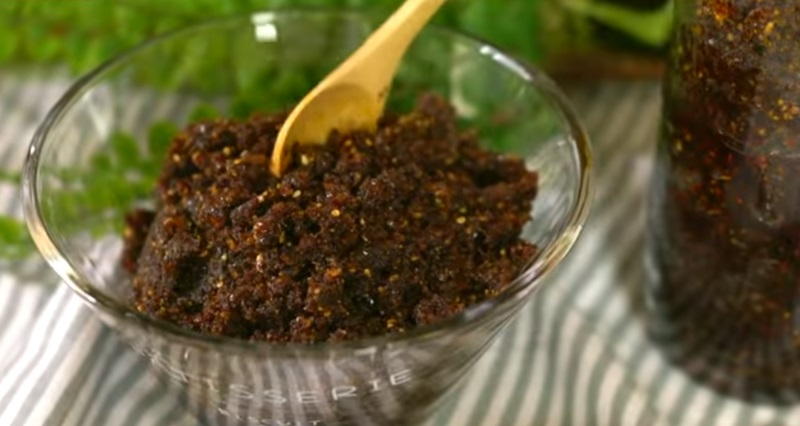
Shacha sauce, also known as "Chinese BBQ sauce," is a popular condiment in Chinese cuisine. This savory and fragrant condiment is crafted by blending various spices such as garlic, shallots, and dried shrimp. The result is a complex and rich flavor profile that encompasses elements of sweetness, spiciness, and umami. Shacha sauce can be employed in versatile ways: as a rub for barbecued meats, a base for soups, a seasoning for stir-fries, or even as a dipping sauce for hot pot.
Plum sauce
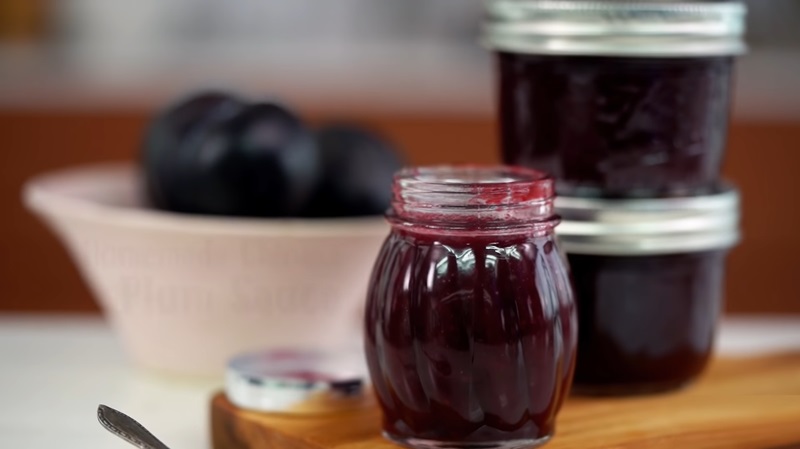
Plum sauce is a popular Chinese condiment known for its tangy and sweet flavor. Made from ripe plums, vinegar, sugar, and various spices, this versatile sauce adds a burst of flavor to a variety of dishes. The deep reddish-brown sauce has a smooth and thick consistency. Plum sauce is commonly used as a dipping sauce for appetizers such as spring rolls, dumplings, and roasted meats. Its sweet and sour taste complements the savory flavors of these dishes, providing a delightful contrast. The sauce can also be used as a marinade for grilled or stir-fried meats, adding a hint of sweetness and enhancing the overall taste. Apart from its use as a condiment, plum sauce can also be used as a glaze for roasted or grilled vegetables. It adds a delightful caramelized flavor and gives a glossy appearance to the dish.
Chili Crisp

Chili crisp is a spicy sauce crafted from fried chili peppers and various aromatic ingredients blended in oil, often with additional additives. Unlike traditional chili oils or sauces, chili crisp boasts a texture dominated by crunchy pieces rather than oil. This condiment is usually spooned onto or mixed into dishes, rather than poured, and it's more commonly used as a finishing touch rather than as an ingredient in cooking.
Tianmian sauce

Tianmian sauce, a popular Chinese condiment, is a thick, sweet, and savory sauce that adds a burst of flavor to various dishes. Made from fermented wheat flour, soybeans, and sugar, this versatile sauce is commonly used in Chinese cuisine, particularly in the region of Shanghai. With a dark brown color and a glossy texture, Tianmian sauce offers a unique combination of sweetness and umami. Its complex flavor profile includes hints of caramel, molasses, and soy, making it an excellent complement to stir-fries, noodles, and braised dishes. It is also frequently used as a dipping sauce for dumplings and buns. Tianmian sauce's rich and intense taste is achieved through a fermentation process that can take months to complete. The result is a condiment that is both tangy and slightly sweet, adding depth and complexity to any dish it is paired with.
Tauco
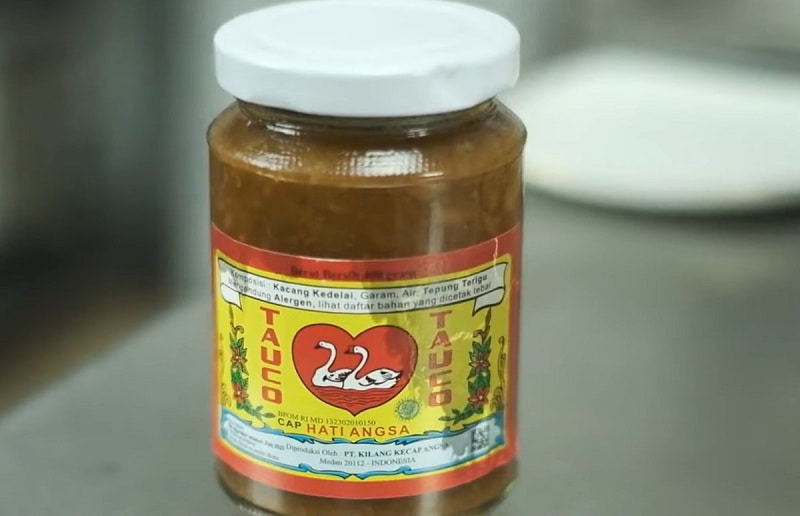
Tauco is a thick paste derived from fermented yellow soybeans, commonly used in Chinese cooking. The process involves boiling the soybeans, grinding them, blending with flour, and fermenting to create a soy paste. This paste undergoes further fermentation by soaking in salt water and sun-drying for weeks until it achieves a yellow-reddish hue. Tauco is frequently employed as a condiment and flavor enhancer in various stir-fried dishes.
Dark Soy Sauce
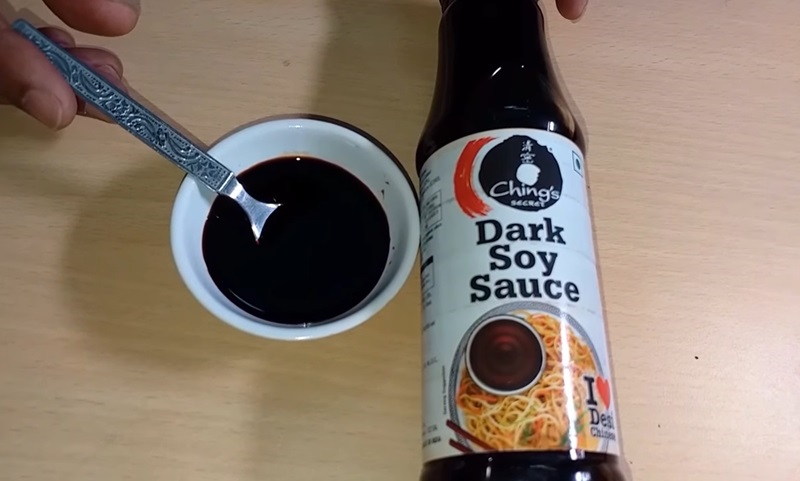
Dark soy sauce is a traditional Chinese condiment that adds a rich, dark color and a unique savory flavor to various dishes. Made from soybeans, water, and wheat, it goes through a fermentation process that enhances its taste and aroma. Dark soy sauce is thicker and has a stronger flavor compared to regular soy sauce, making it perfect for marinating, stir-frying, and adding depth to soups and sauces. In Chinese cuisine, dark soy sauce is often used to enhance the color and taste of braised dishes, such as pork belly or beef stew. It acts as a natural food coloring, giving the dishes a shiny, caramelized appearance. The intense flavor of dark soy sauce brings a balance of sweetness and saltiness, complementing the meaty and earthy flavors of the dishes.
Zhenjiang Vinegar
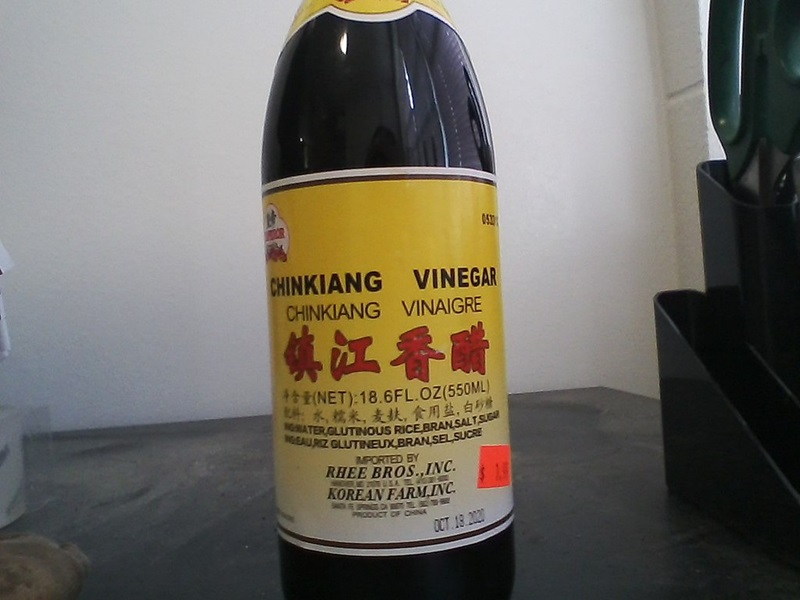
Zhenjiang is a type of rice-based black vinegar, is extensively utilized in Chinese culinary practices. It is named after the city of Zhenjiang in Jiangsu province. The production of Zhenjiang vinegar commences by pouring a mixture called vinegar pei (comprising wheat bran, rice hull, alcohol derived from the fermentation of glutinous rice, and vinegar seed from a previous batch) into an urn until it's half-filled. This mixture is kept warm for about 3 days in summer and 6 days in winter. Subsequently, rice hull is incorporated and stirred daily until the urn is filled. Salt is then added, and the urn is stored for up to 3 months, allowing it to undergo an aging process. Following this, the vinegar is filtered, and the soaking liquid from water-soaked, parched rice is introduced to enhance both color and flavor.
Lufu (food)
-1703659992.jpg)
Lufu, a type of fermented bean curd, has its origins in Yunnan Province in Southwest China. It has a reddish-yellow color and offers a soft texture along with a delicious savory flavor. Lufu is commonly used as a condiment for kăo ĕrkuāi or can be turned into a sauce for Yunnan-style barbecue or stinky tofu.
Yellow Soybean Paste
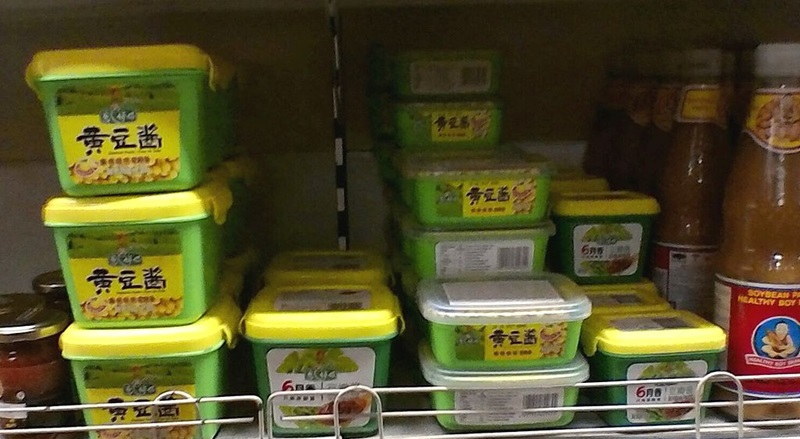
Yellow soybean paste, also known as huáng jiàng, is a traditional Chinese condiment that adds depth and richness to various dishes. Made from fermented soybeans, this paste has a distinct yellow color and a savory, umami flavor. It is commonly used in Chinese cuisine, particularly in the northern regions. Yellow soybean paste is versatile and can be used in a variety of ways. It is often used as a base for stir-fries, braised dishes, and soups, adding a complex and robust flavor. It can also be used as a marinade for meats and tofu, infusing them with its unique taste. The paste is made by fermenting soybeans with salt and other ingredients over a period of time, which allows the flavors to develop and intensify. The fermentation process gives the paste a deep, earthy aroma and a slightly sweet and tangy taste. Y\
Yongfeng Chili Sauce
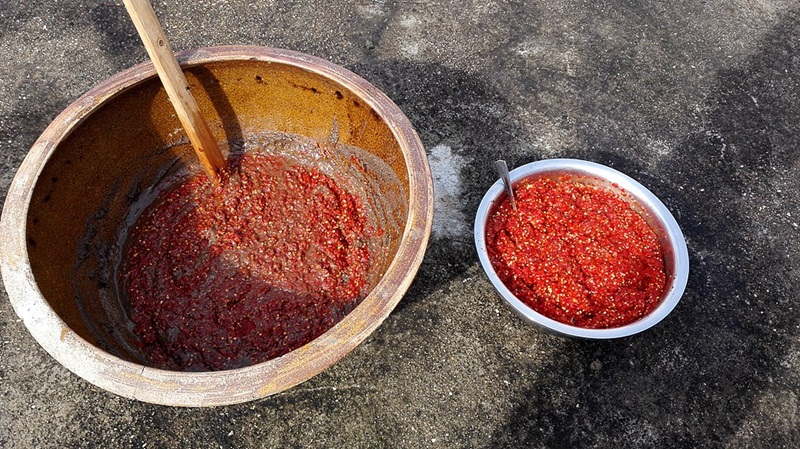
Yongfeng chili sauce is a traditional product made at Yongfeng, Shuangfeng County, Hunan, China. Yongfeng chili sauce is made of Yongfeng chili, polished glutinous rice, wheat, soybeans, and salt. It is prepared by boiling, grinding, mixing, fermenting, and aging, and produces a dark red, spicy sauce.
Garlic Chive Flower Sauce
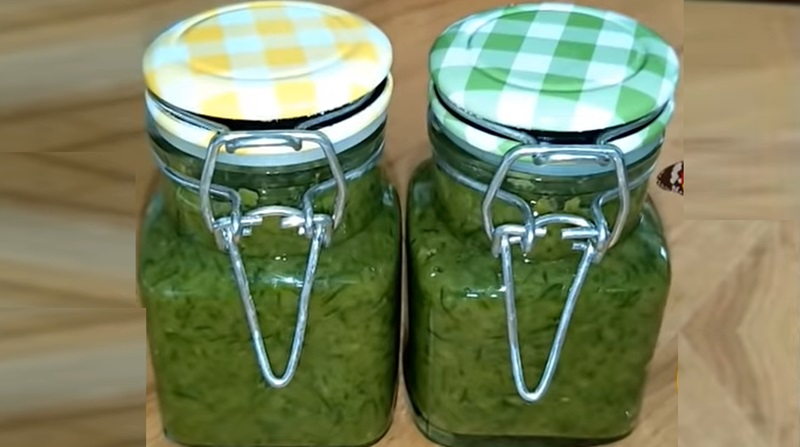
Garlic chive flower sauce is made from fresh garlic chive flowers. This sauce offers a unique and fragrant taste. Garlic chive flower sauce is prepared by finely chopping the garlic chive flowers and blending them with various ingredients such as soy sauce, vinegar, sesame oil, and chili peppers. The result is a savory and slightly spicy sauce that is packed with umami flavors. This sauce is commonly used as a dipping sauce for dumplings, steamed buns, and other dim sum dishes. Its intense garlic and chive flavors complement the delicate flavors of the dumplings perfectly, providing a burst of freshness and complexity. In addition to its use as a dipping sauce, garlic chive flower sauce can also be used as a marinade for meats or a condiment for stir-fried dishes.
Siu Haau Sauce

Siu haau sauce is the key barbecue sauce in Cantonese cooking, typically comprising ingredients like garlic, honey, palm sugar, five spice powder, and pepper. Unlike a post-cooking flavoring sauce, Siu haau is applied during the barbecue process itself. Notably, it isn't utilized for siu mei rotisserie-style cooking.
Peach Sauce
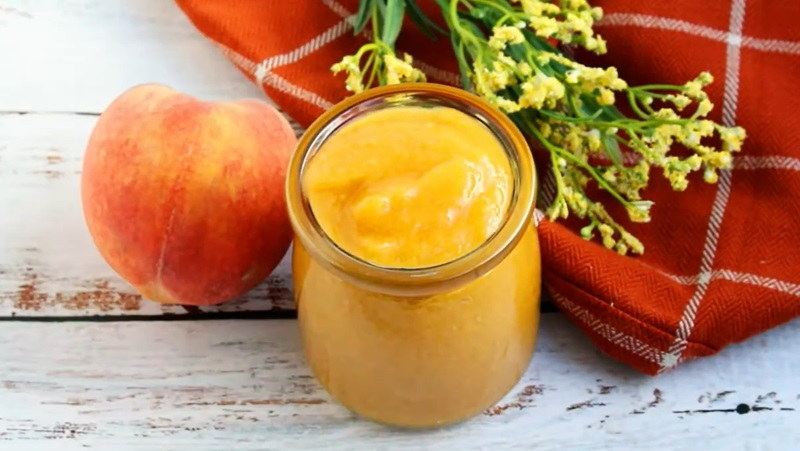
Peach sauce dish is a delightful and vibrant Chinese condiment that adds a burst of flavor to any meal. Made from ripe peaches, this sauce is a sweet and tangy accompaniment that enhances both savory and sweet dishes. To create this sauce, fresh peaches are peeled and pitted before being pureed into a smooth consistency. The puree is then gently simmered with a combination of sugar, vinegar, and spices such as ginger and garlic. The result is a beautifully balanced sauce that combines the natural sweetness of peaches with a subtle hint of tartness. Peach sauce dish is a versatile condiment that can be used in various ways. It is commonly served alongside stir-fried vegetables, grilled meats, and steamed dumplings, adding a fruity and tangy element to these dishes.




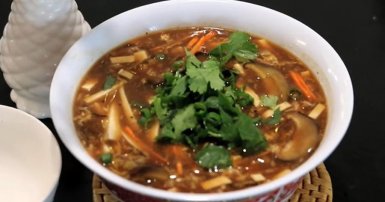
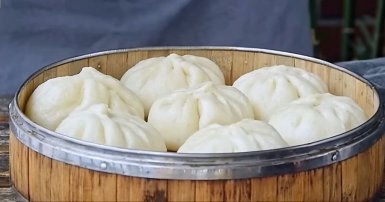
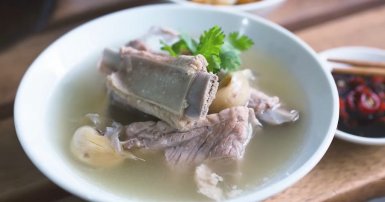


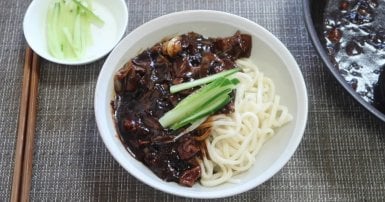

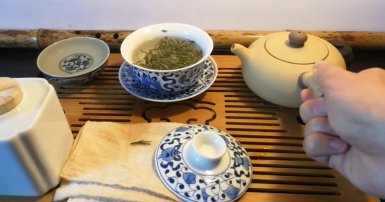

-1709813013.jpg)


